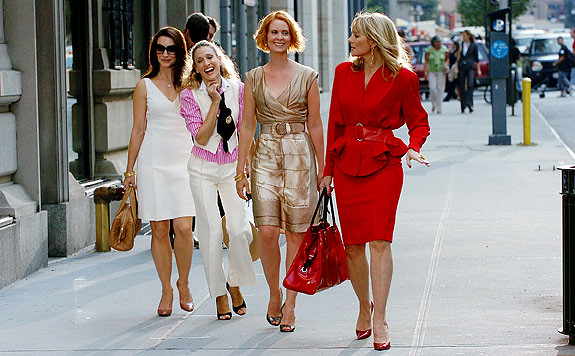"And Just Like That," the sequel to the beloved "Sex and the City" (SATC), struggled to recapture the magic that defined the original series for many reasons deeply tied to tone, character development, and cultural shifts. SATC, which aired from 1998 to 2004, was renowned for its vibrant portrayal of single women in their 30s navigating life, love, and friendship in New York City. It felt fresh, entertaining, and imbued with a romanticized energy that made viewers dream of the city and its possibilities. In contrast, "And Just Like That" (AJLT) presents a much darker and more somber tone, focusing heavily on themes such as aging, loss, and disillusionment. Where SATC was about hope, fun, and possibility, AJLT leans into the "doom and gloom" of middle age, which made it less appealing and emotionally uplifting in comparison.
One of the key critiques of AJLT is its "cartoonish" and exaggerated depiction of wealth and lifestyle. While the original show portrayed an aspirational but somewhat relatable urban experience, AJLT’s characters seem trapped in an overly glossy, unrealistic world detached from the gritty, genuine vibrancy New York once symbolized. This detachment from authenticity is a major factor why many viewers found AJLT lacking. The charm of SATC lay in its delicate balance of glamour and the emotional vulnerabilities of its protagonists. AJLT, on the other hand, was seen as trying too hard to appear current and socially conscious, at times feeling forced and politically correct rather than naturally evolving its characters.
Character evolution in AJLT was another point of contention. Fans of SATC loved the characters for their wit, complexity, and chemistry. However, in AJLT, many felt the characters lost their essence. Instead of inspiring desires to join their inner circle, these women were perceived as vapid, out of touch, and unrelatable. For instance, Carrie Bradshaw's financial instability and lifestyle, which were central storylines in SATC albeit with convenient contradictions, seemed far less believable and well-founded in the sequel. The new narratives sometimes diminished the characters' earlier achievements and freedom, making them appear stuck in hollow existences rather than thriving individuals.
Lastly, the cultural and societal landscape has shifted significantly since the "Sex and the City" era, and AJLT struggled to bridge this gap. The original series thrived in a late-90s and early-2000s context where female liberation and sexual freedom were fresh narratives on mainstream television. AJLT wrestled with modern sensibilities and expectations around representation, diversity, and sensitivity, which contributed to the show feeling overly agenda-driven. These elements, combined with uneven writing and less impactful storytelling, made it difficult for AJLT to replicate the pioneering spirit and cultural resonance of its predecessor. Instead of inspiring dreams and romance, the sequel often left viewers with a sense of fatigue and disappointment.


